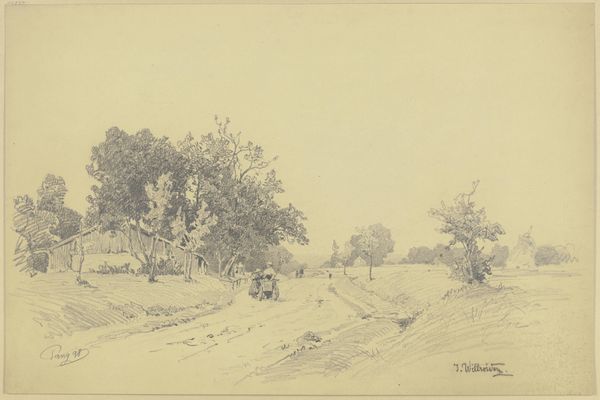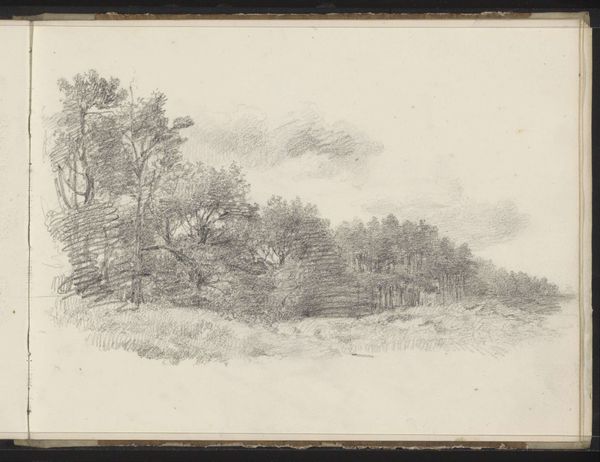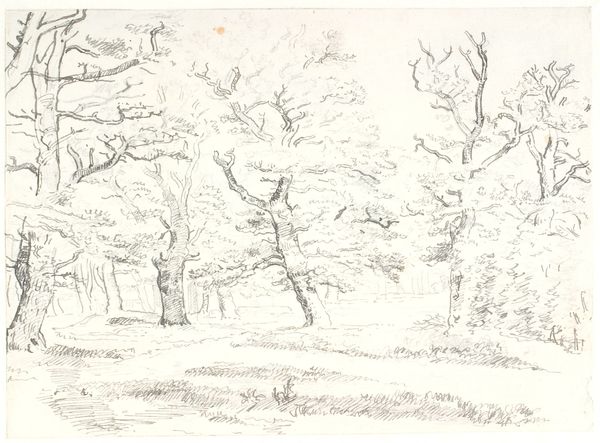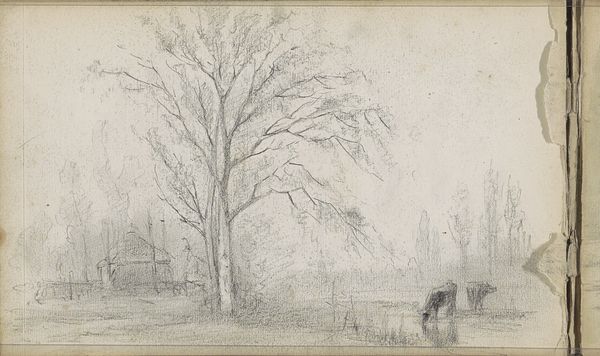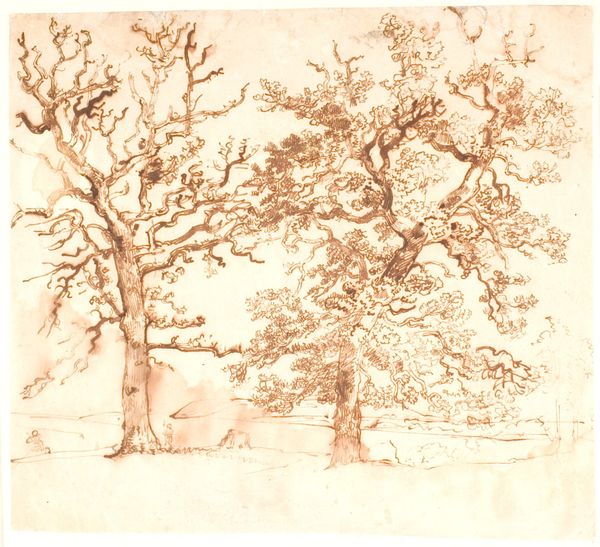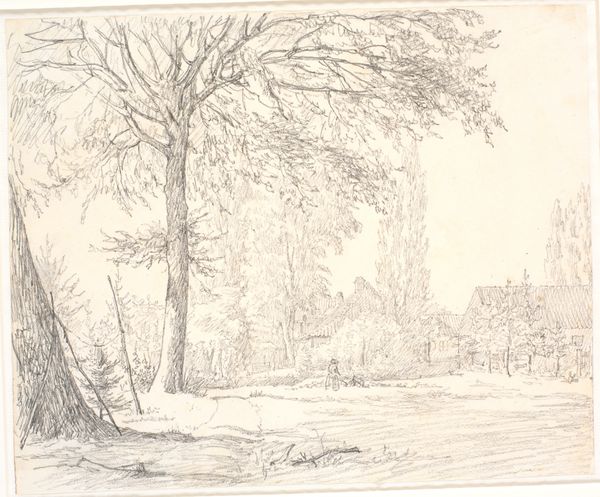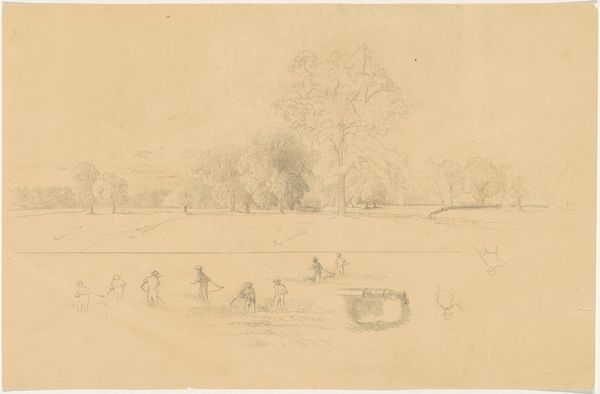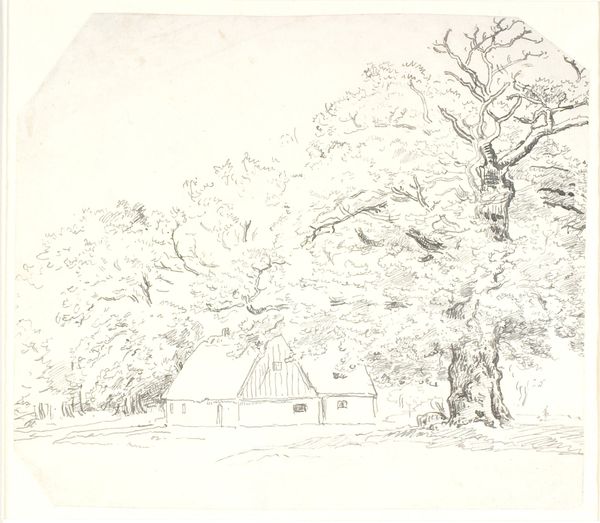
Heste på en lysning ved store egetræer. Sandsynligvis Dyrehaven. 1873
0:00
0:00
drawing
#
drawing
#
landscape
#
realism
Dimensions: 135 mm (height) x 238 mm (width) (bladmaal)
Editor: This drawing by P.C. Skovgaard, dated 1873, is titled "Heste på en lysning ved store egetræer. Sandsynligvis Dyrehaven." which translates to "Horses in a clearing by large oak trees. Probably Dyrehaven.". It's a delicate rendering of a Danish landscape with horses grazing peacefully. The sketch-like quality gives it an immediate, intimate feel. How do you interpret this work, considering its historical context? Curator: This drawing provides an interesting lens through which to consider 19th-century Danish national identity and its relationship to nature. Skovgaard, a key figure in the Danish Golden Age, often depicted the landscapes of Denmark as embodying a unique national spirit. How might this romantic vision of the land, with its ancient oak trees and free-roaming horses, be connected to notions of cultural heritage and belonging during that period? Consider also the role of the artist as a mediator, framing this relationship with the land for the viewer. Editor: That’s fascinating. I hadn't thought about it in terms of nation-building, but that makes a lot of sense. The oak trees feel particularly significant – almost like monuments. But where do the horses fit into this narrative? Curator: Precisely! The oak, a symbol of strength and longevity, serves as a powerful metaphor. The horses, however, introduce a layer of complexity. They are not simply picturesque elements. They represent a kind of freedom but also labor. Consider how the image of working animals intersects with prevailing social structures and rural economies. The landscape is not merely an aesthetic space; it is a site of production and social relations. Whose story do we see reflected and whose is ignored? Editor: I see your point. So, the drawing is not just a pretty picture, it's a document reflecting specific power dynamics and social narratives within 19th-century Denmark. Curator: Exactly. This image becomes an interesting springboard for conversations about land ownership, social equity, and the construction of national identity. By viewing the artwork through this lens, we enrich our comprehension of both its historical significance and its continuing significance in our own time. Editor: I definitely have a deeper understanding of how art can be interpreted in many different ways, when connected with our history.
Comments
No comments
Be the first to comment and join the conversation on the ultimate creative platform.
